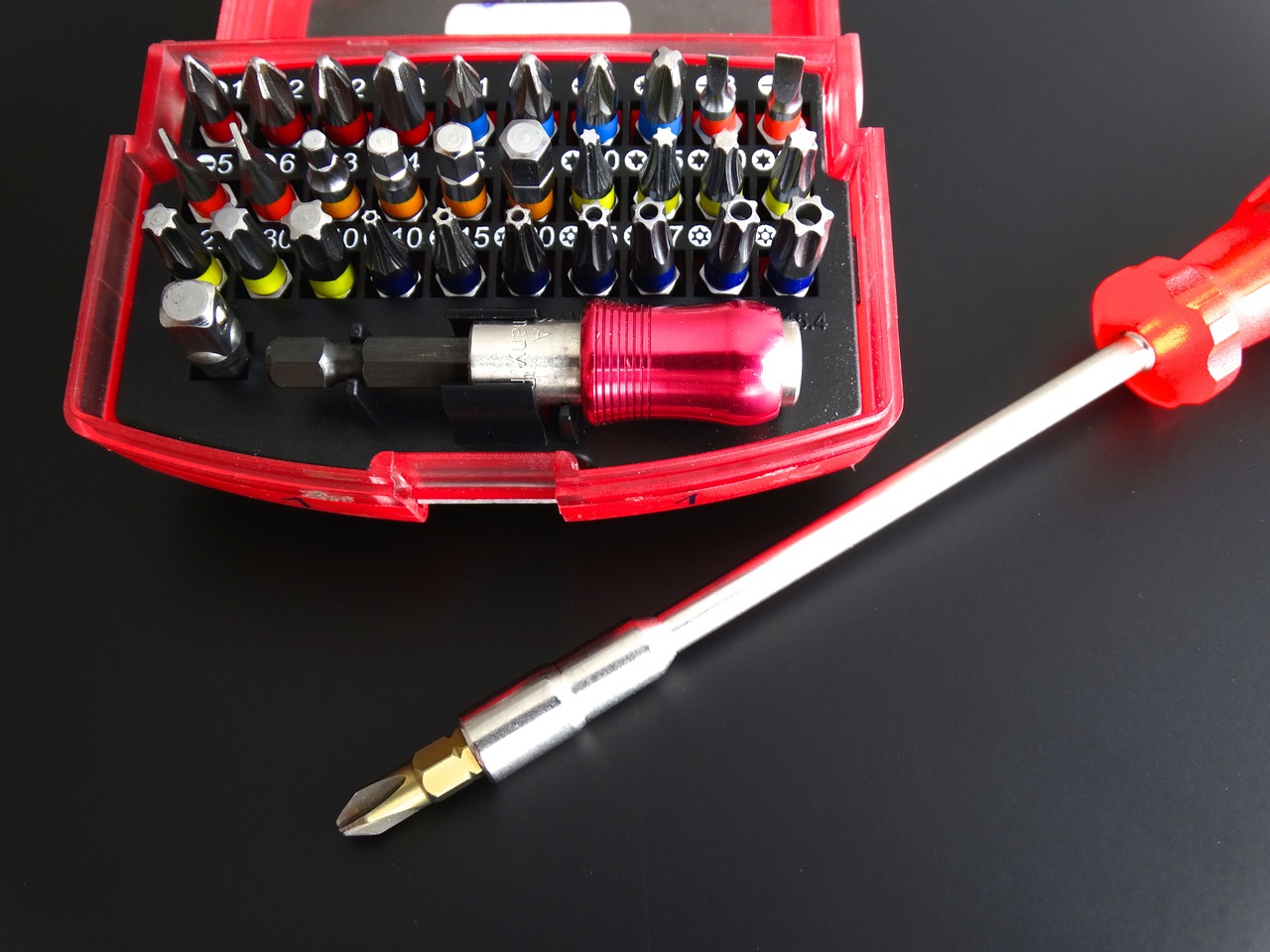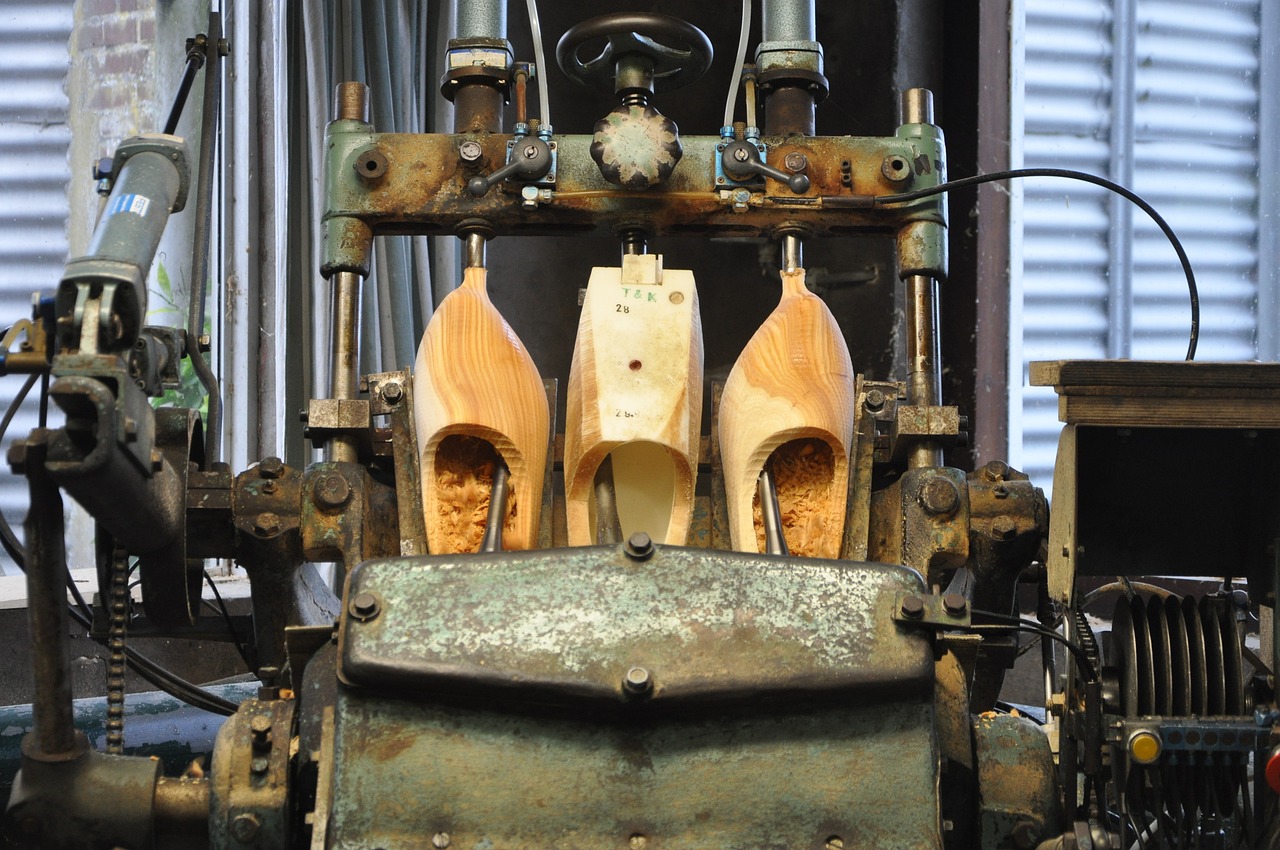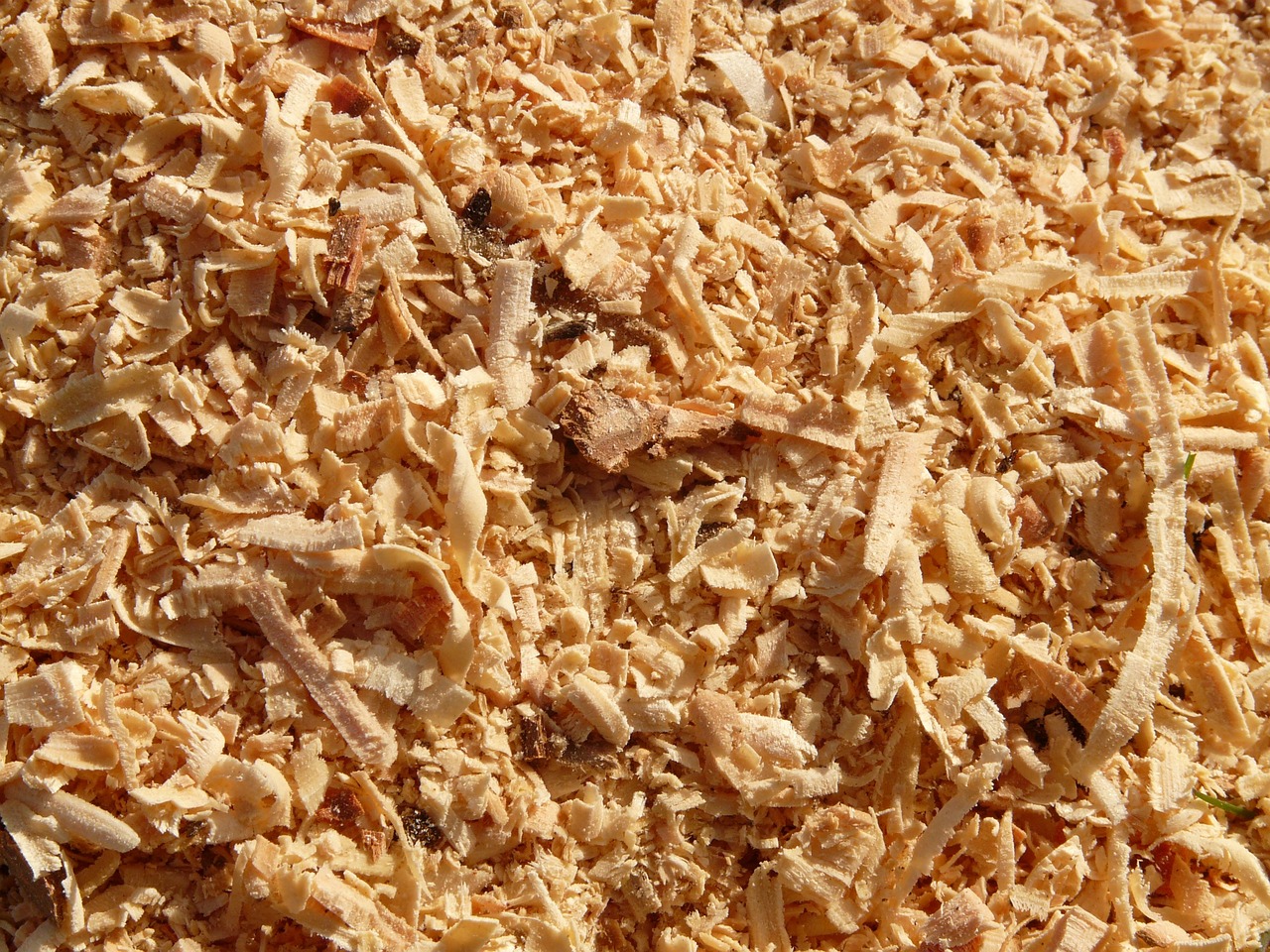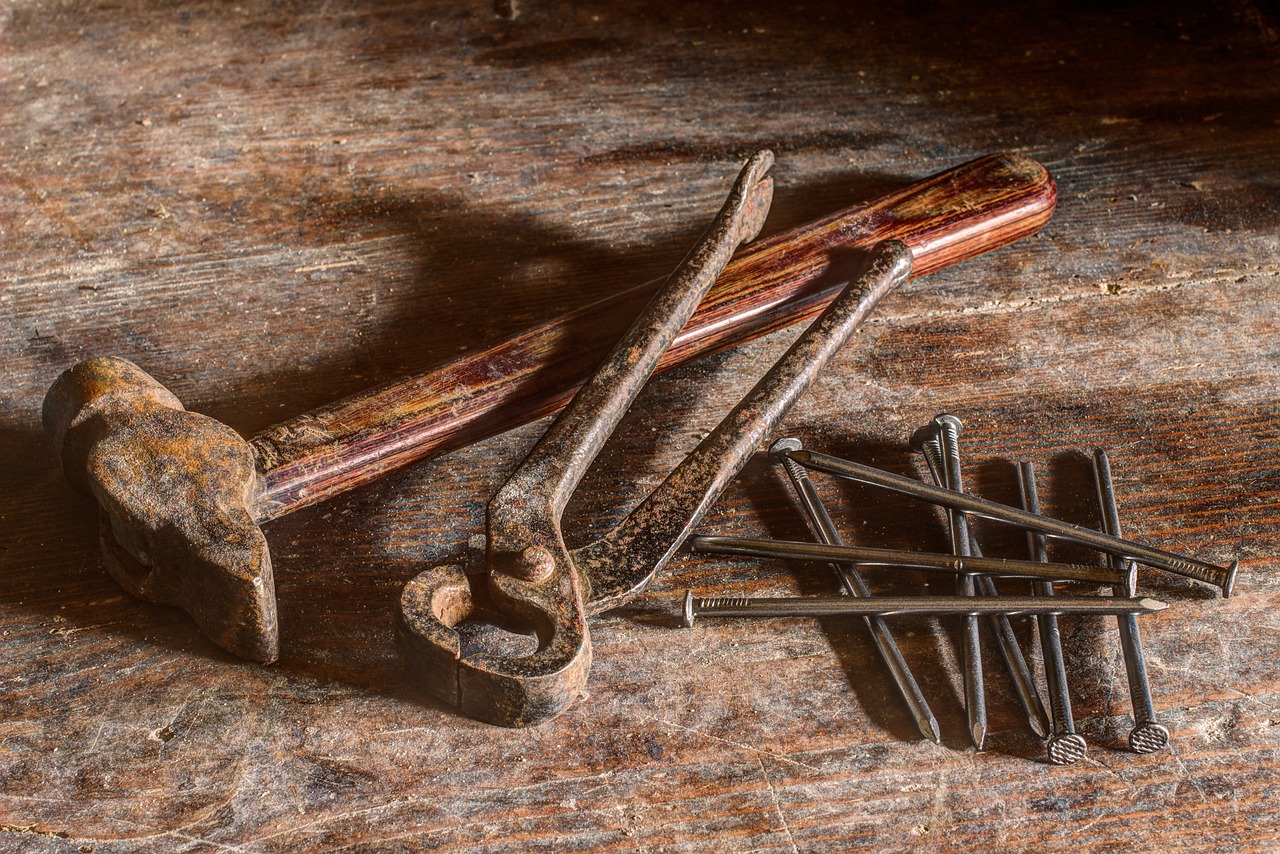Woodworking Basics: Using a Jigsaw for Crafts
Woodworking is an art that combines creativity and craftsmanship, and when it comes to making precise cuts, a jigsaw is your best friend. Whether you're a seasoned woodworker or just starting your crafting journey, understanding how to use a jigsaw can elevate your projects to new heights. This article explores the essential techniques and tips for using a jigsaw in woodworking projects, ensuring both beginners and experienced crafters can create beautiful and precise designs.
Before diving into the world of jigsaws, it's important to understand what they are and how they work. A jigsaw is a versatile power tool that uses a reciprocating blade to cut through various materials, including wood, plastic, and even metal. There are several types of jigsaws available on the market, ranging from basic models to advanced ones with variable speed settings and orbital action. When selecting a jigsaw, consider factors such as power, ergonomics, and the types of projects you plan to undertake.
One of the most critical aspects of using a jigsaw effectively is selecting the right blade. The blade you choose can make all the difference in achieving clean and precise cuts. Jigsaw blades come in various types, including:
- Wood Cutting Blades: Designed for cutting softwood and hardwood, these blades typically have fewer teeth per inch (TPI).
- Metal Cutting Blades: With a higher TPI, these blades are ideal for cutting through metal sheets and pipes.
- Specialty Blades: These blades are tailored for specific materials, such as ceramic or tile.
Choosing the appropriate blade for your project is crucial for achieving the best results. Always consult the blade packaging for guidance on the recommended materials.
Safety is paramount in woodworking, especially when operating power tools like jigsaws. To prevent accidents and injuries, always follow these essential safety measures:
- Wear appropriate safety gear, including goggles and ear protection.
- Ensure the work area is well-lit and free from clutter.
- Always secure your workpiece to prevent it from moving during cutting.
- Keep hands clear of the blade and never reach under the material while cutting.
By taking these precautions, you can create a safer environment for yourself and those around you.
A well-organized workspace enhances both efficiency and safety. Before starting your jigsaw project, take the time to set up your workshop effectively. Here are some tips to consider:
- Designate a specific area for cutting, away from distractions.
- Ensure all tools are within reach to minimize movement while working.
- Use a sturdy workbench or table to provide stability for your workpiece.
By preparing your workspace, you set yourself up for a successful and enjoyable woodworking experience.
Mastering basic cutting techniques is essential for effective jigsaw use. Here are some fundamental techniques to enhance your skills:
- Straight Cuts: Use a straight edge as a guide to achieve clean, straight lines.
- Curves: To cut curves, follow the line slowly and steadily, allowing the blade to do the work.
- Intricate Designs: For more complex shapes, take your time and make small adjustments as you cut.
Practicing these techniques will help you gain confidence and precision in your jigsaw projects.
Regular maintenance is key to prolonging the life of your jigsaw. Here are some simple tips to keep your tool in top condition:
- Clean the blade and the base plate after each use to prevent resin buildup.
- Lubricate moving parts to ensure smooth operation.
- Inspect the blade for wear and replace it when necessary.
By taking care of your jigsaw, you'll ensure it remains a reliable companion for all your woodworking projects.
Even experienced woodworkers can make mistakes. Here are some common errors to watch out for when using a jigsaw:
- Not securing the workpiece properly, leading to inaccurate cuts.
- Using the wrong blade for the material, resulting in jagged edges.
- Rushing through cuts, which can lead to mistakes.
By being aware of these pitfalls, you can improve your jigsaw skills and achieve better results.
Once you’ve mastered the basics, it's time to explore advanced techniques to elevate your projects. This can include intricate cuts, such as:
- Creating inlays and patterns.
- Cutting multi-layered designs.
- Using templates for consistent shapes.
With practice, you can turn simple projects into stunning works of art using your jigsaw.
If you're looking for inspiration, here are some simple yet rewarding project ideas tailored for beginners:
- Wooden Signs: Personalize your space with custom wooden signs.
- Picture Frames: Create unique frames for your favorite photos.
- Coasters: Make functional and decorative coasters for your home.
These projects are not only easy to tackle but also provide a great way to practice your jigsaw skills.
Q: What is the best jigsaw for beginners?
A: Look for a jigsaw with a comfortable grip, variable speed settings, and a good selection of blades. Brands like Bosch and DeWalt offer reliable options.
Q: Can I use a jigsaw for cutting metal?
A: Yes, but make sure to use a metal cutting blade designed for that purpose.
Q: How do I avoid splintering when cutting wood?
A: Use a fine-toothed blade and cut with the finished side facing down.
Q: How often should I change the blade?
A: Change the blade whenever you notice a decrease in cutting performance or if it becomes dull.
Q: Is it safe to cut curves with a jigsaw?
A: Yes, as long as you take your time and follow the curve slowly.

Understanding Jigsaws
When it comes to woodworking, the jigsaw is like that trusty friend who’s always ready to help you tackle any project. But what exactly is a jigsaw? Essentially, it’s a power tool that uses a reciprocating blade to cut through various materials, making it an essential tool for both beginners and seasoned woodworkers alike. Jigsaws are versatile and can handle everything from wood to metal, and even plastic, which makes them a favorite among crafters.
There are several types of jigsaws available on the market today, and understanding their differences is crucial for making an informed choice. The most common types include:
- Corded Jigsaws: These are powered by electricity and are known for their consistent power and performance. They’re ideal for heavy-duty projects.
- Battery-Powered Jigsaws: Offering the convenience of portability, these jigsaws are perfect for projects on the go. However, they may not provide the same power as corded versions.
- Variable Speed Jigsaws: These allow you to adjust the speed of the blade, giving you more control over the cut, which is particularly useful for intricate designs.
Each jigsaw comprises several components that work together to provide an efficient cutting experience. The main parts include:
| Component | Description |
|---|---|
| Base Plate | The flat surface that rests on the material being cut. It can often be adjusted for angled cuts. |
| Blade | The cutting element that comes in various types for different materials. |
| Motor | Powers the blade and determines the cutting speed and efficiency. |
| Handle | The part you grip, designed for comfort and control during operation. |
Understanding how these components function together can significantly enhance your jigsaw experience. For instance, the base plate’s ability to tilt allows for beveled cuts, while a variable speed motor gives you the flexibility to cut through delicate materials without damaging them. Additionally, knowing how to properly insert and remove blades can save you time and frustration.
In summary, a jigsaw is a powerful and versatile tool that can open up a world of creative possibilities in your woodworking projects. Whether you’re cutting curves or straight lines, mastering the jigsaw will elevate your crafting game. So, the next time you’re in the workshop, remember that this tool is your ally in creating beautiful designs!
Q: What materials can I cut with a jigsaw?
A: Jigsaws can cut through a variety of materials including wood, metal, plastic, and even ceramic tiles, depending on the blade used.
Q: How do I choose the right blade for my jigsaw?
A: The right blade depends on the material you are cutting. For wood, a standard blade works well, while for metal, you’ll need a blade specifically designed for that purpose.
Q: Is it safe to use a jigsaw?
A: Yes, jigsaws are generally safe when used properly. Always wear safety goggles and follow the manufacturer's instructions to minimize the risk of accidents.
Q: Can I make curved cuts with a jigsaw?
A: Absolutely! Jigsaws are excellent for making curved cuts. Just be sure to use a fine-toothed blade and move slowly for the best results.

Choosing the Right Blade
When it comes to using a jigsaw, is not just a minor detail; it’s a critical factor that can make or break your project. Picture this: you're all set to cut a beautiful piece of wood for your latest craft project, but instead of a smooth, clean line, you end up with jagged edges and splinters. Frustrating, right? The blade you select can determine whether you achieve that flawless finish or a messy result. So, let's dive into the world of jigsaw blades and discover how to select the perfect one for your needs.
Jigsaw blades come in various types, each designed for specific materials and cutting techniques. To help you understand the options available, here’s a quick overview of the most common blade types:
| Blade Type | Material | Best For |
|---|---|---|
| Wood Blades | High-Speed Steel (HSS) | Softwoods and hardwoods |
| Metal Blades | Bimetal | Aluminum, thin metals |
| Plastic Blades | Specialized | Acrylic, PVC |
| Tile Blades | Ceramic | Ceramic tiles |
Each blade type has its own unique features and tooth designs. For instance, wood blades typically have fewer teeth per inch (TPI), which allows for faster cutting but can leave a rough edge. On the other hand, blades designed for metal will have more teeth for a smoother finish, but they cut at a slower pace. Understanding the material you’re working with is essential. If you’re cutting softwood, a blade with 6-10 TPI will do the trick, while for hardwoods, you might want to opt for 10-14 TPI for a cleaner cut.
But it doesn't stop there! The tooth design is another crucial aspect. You’ll find blades with different tooth shapes, such as:
- Regular Tooth: Ideal for general-purpose cutting.
- Reverse Tooth: Great for reducing splintering on the top surface.
- Precision Ground: Perfect for intricate cuts and fine details.
So, how do you make the right choice? Start by assessing your project requirements. Ask yourself:
- What material am I cutting?
- Do I need a smooth finish or just a rough cut?
- What level of detail do I want in my design?
Once you have your answers, you can confidently pick a blade that suits your project. Remember, investing in a few different blade types can be beneficial, as it allows you to switch out blades depending on what you’re working on. This flexibility can save you time and improve the quality of your work.
In conclusion, for your jigsaw is an essential step in ensuring your woodworking projects turn out beautifully. By understanding the various blade types, tooth designs, and their specific applications, you can enhance your crafting experience and produce stunning results. So, the next time you pick up your jigsaw, take a moment to think about the blade you’re using—it could be the difference between a masterpiece and a mess!

Safety Precautions
When it comes to woodworking, especially when using tools like a jigsaw, safety should always be your top priority. Imagine wielding a powerful tool that can transform wood into intricate designs, but without the right precautions, it could also lead to accidents. To ensure a safe crafting experience, here are some essential safety measures you should keep in mind.
First and foremost, always wear appropriate personal protective equipment (PPE). This includes safety goggles to protect your eyes from flying debris, ear protection to guard against noise, and a dust mask to keep harmful particles out of your lungs. Think of your PPE as your armor; it may not look flashy, but it protects you from the unseen dangers lurking in your workshop.
Next, maintaining a clean and organized workspace is crucial. A cluttered area can lead to accidents, so make it a habit to keep your tools and materials in order. Before you start cutting, take a moment to ensure that your work surface is free from unnecessary items. This simple step can significantly reduce the risk of tripping or knocking over tools. Additionally, consider using a non-slip mat to stabilize your workpiece, especially when making intricate cuts.
Another vital aspect is to check your jigsaw before use. Make sure the blade is securely attached and appropriate for the material you'll be cutting. A loose or incorrect blade can lead to poor cuts or, worse, injury. Also, inspect the power cord for any damage. A frayed cord can be a recipe for disaster, so handle it with care. Remember, a few moments spent checking your equipment can save you from a lot of trouble later.
When operating the jigsaw, always keep your hands away from the cutting area. It’s easy to get caught up in the moment, but maintaining a safe distance is essential. Use clamps to secure your material instead of holding it with your hands. This not only frees up your hands for better control of the jigsaw but also keeps them out of harm's way. Never rush your cuts; take your time to ensure precision and safety.
Lastly, be mindful of your surroundings. Ensure that no one is standing too close to your workspace while you're cutting. A flying piece of wood or a sudden kickback can cause injuries not just to you but also to those nearby. Consider placing a warning sign or using cones to mark your work area, signaling others to keep their distance.
By following these safety precautions, you can enjoy the creative process of woodworking without compromising your well-being. Remember, a safe craftsman is a happy craftsman. So gear up, stay aware, and let your jigsaw work its magic!
- What type of protective gear should I wear when using a jigsaw? Always wear safety goggles, ear protection, and a dust mask to protect against debris and noise.
- How can I prevent kickback when using a jigsaw? Ensure your material is securely clamped and always keep your hands away from the cutting area.
- Is it safe to use a jigsaw on uneven surfaces? Yes, but ensure your workspace is stable, and use clamps to secure your material properly.
- What should I do if my jigsaw blade gets stuck? Turn off the tool and unplug it before attempting to remove the material. Never try to free the blade while the tool is still powered.

Preparing Your Workspace
Creating a well-organized workspace is essential for any woodworking project, especially when using a jigsaw. Think of your workspace as the canvas for your craft; it needs to be clean, well-lit, and equipped with all the necessary tools. Imagine trying to paint a masterpiece in a cluttered room—it's not just difficult; it can lead to mistakes and accidents. So, let’s dive into how to set up your workshop effectively!
First off, lighting is crucial. Make sure your workspace is brightly lit to help you see the details of your project clearly. Natural light is great, but if that’s not an option, consider using bright LED lights that mimic daylight. You wouldn’t want to miss a tiny detail because of poor lighting, right?
Next, you’ll want to clear the area of any unnecessary clutter. A clean workspace not only looks good but also boosts your efficiency. Take a moment to remove any distractions or items that don’t belong in your woodworking area. You can think of it as decluttering your mind before starting a big project; it helps you focus better!
Another important aspect is having a sturdy work surface. A solid workbench or table is ideal for jigsaw projects. It provides stability when cutting and allows you to work more accurately. If you don’t have a dedicated workbench, consider using a thick piece of plywood laid across two sawhorses. Just ensure it's secure and won’t wobble while you’re working.
Moreover, it’s essential to have your tools organized and easily accessible. Consider using a tool chest or wall-mounted pegboard to hang your jigsaw, blades, and other essential tools. This way, you won’t waste time searching for what you need, and everything will be right at your fingertips. Imagine reaching for your jigsaw and finding it instantly instead of rummaging through a drawer!
Finally, don’t forget about safety gear. Always wear safety glasses to protect your eyes from sawdust and debris. Ear protection is also a good idea, especially if you’re working on larger projects that require more noise. A dust mask can help keep you from inhaling harmful particles. Think of it as your armor; it keeps you safe while you create your masterpiece!
In summary, a well-prepared workspace can significantly enhance your jigsaw projects. By focusing on lighting, organization, a sturdy work surface, and safety gear, you’re setting yourself up for success. It’s like setting the stage for a performance; when everything is in place, you can focus on delivering a great show!
- What is the best type of surface for using a jigsaw? A sturdy workbench or a thick piece of plywood on sawhorses works best for stability.
- How can I ensure my workspace is safe? Keep it clean and organized, use safety gear such as glasses and ear protection, and make sure tools are in good condition.
- What lighting is best for woodworking? Bright LED lights that mimic natural daylight are ideal for seeing details clearly.

Basic Cutting Techniques
When it comes to woodworking, mastering the with a jigsaw is like learning the ABCs of crafting. Whether you're a novice or an experienced woodworker, understanding how to effectively use a jigsaw can open up a world of creative possibilities. The jigsaw is a versatile tool that allows you to make a variety of cuts, from straight lines to intricate curves. Let's dive into some essential techniques that will help you achieve precision and finesse in your projects.
First off, let's talk about straight cuts. These are the bread and butter of jigsaw usage. To ensure a clean cut, always use a straight edge as a guide. This can be a ruler, a piece of scrap wood, or a dedicated cutting guide. Place the jigsaw blade against the edge and follow it closely, applying gentle pressure. Remember, patience is key! Rushing through a straight cut can lead to jagged edges, which can ruin the aesthetic of your project.
Next, we have curved cuts, which allow for more creativity in your designs. When making curves, it’s essential to go slow and steady. Start by marking your desired curve on the material, and then carefully guide the jigsaw along the line. It's helpful to use a blade designed for curves, as these blades are thinner and more flexible, allowing for tighter turns. If you find yourself struggling with a particularly tight curve, don’t hesitate to make relief cuts—these are small cuts made into the material that can help ease the jigsaw around the curve.
Now, let’s not forget about intricate designs. If you’re looking to add a personal touch to your woodworking projects, intricate cuts are the way to go. These cuts can transform a simple piece of wood into a work of art. To achieve intricate designs, start with a detailed template. You can attach this template to your wood using spray adhesive or double-sided tape. As you cut, follow the lines carefully, and don’t rush. A steady hand and a sharp blade will yield the best results.
Here’s a quick summary of the basic cutting techniques:
| Cut Type | Description | Tips |
|---|---|---|
| Straight Cuts | Simple cuts along a straight line. | Use a straight edge as a guide. |
| Curved Cuts | Cuts that follow a curved line. | Go slow and use a flexible blade. |
| Intricate Designs | Complex patterns and shapes. | Use a template and take your time. |
As you practice these techniques, you’ll find that confidence builds with each cut. Remember, the key to successful jigsaw use lies in your ability to control the tool and maintain a steady pace. If you feel overwhelmed, take a break and come back to it later. Woodworking should be enjoyable, not stressful!
In summary, mastering basic cutting techniques with a jigsaw is essential for any woodworker. With practice, you’ll be able to create stunning designs that showcase your skills and creativity. So grab your jigsaw, and let’s get cutting!
Q: What type of wood is best for beginners?
A: Softwoods like pine are great for beginners as they are easier to cut and shape.
Q: How do I know which blade to use?
A: The blade type depends on the material. For wood, use a wood-cutting blade; for metal, use a metal-cutting blade.
Q: Can I use a jigsaw for cutting curves in thick wood?
A: Yes, but it’s best to use a blade designed for thicker materials and take your time to avoid burning the wood.
Q: What safety gear should I wear while using a jigsaw?
A: Always wear safety goggles, ear protection, and a dust mask to protect yourself from debris and noise.

Maintaining Your Jigsaw
Maintaining your jigsaw is not just a chore; it’s a crucial part of ensuring that your woodworking projects turn out flawlessly. Think of your jigsaw as a trusty sidekick in your crafting adventures. Just like any reliable partner, it needs a little TLC to keep it functioning at its best. Regular maintenance can help you avoid frustrating situations where your tool fails mid-project, leaving you with jagged cuts or, worse, a tool that won’t start. So, let’s dive into how you can keep your jigsaw in top shape!
First and foremost, cleaning your jigsaw after each use is essential. Wood dust and debris can accumulate and affect the performance of your tool. To clean it, simply unplug the jigsaw and use a soft brush or a cloth to wipe down the exterior. Pay special attention to the base plate and the area around the blade. For stubborn dust, a small vacuum can work wonders. Remember, a clean tool is a happy tool!
Next up is blade maintenance. The blade is arguably the most critical component of your jigsaw. Dull blades can lead to poor cuts and even damage the material you’re working with. To keep your blades sharp, replace them regularly, especially if you notice any signs of wear and tear. It’s also a good idea to have a variety of blades on hand for different materials, such as wood, metal, or plastic. Here’s a quick reference table to help you choose the right blade for your projects:
| Blade Type | Material | Use |
|---|---|---|
| Wood Cutting Blade | Wood | For clean cuts in soft and hardwood. |
| Metal Cutting Blade | Metal | For cutting through various types of metal. |
| Plastic Cutting Blade | Plastic | For precise cuts in acrylic and other plastics. |
Another vital aspect of maintenance is lubrication. Just like any other mechanical tool, your jigsaw requires lubrication to function smoothly. Check the manufacturer’s guidelines for specific lubrication points, but generally, applying a few drops of oil to the pivot points of the saw and the blade holder can make a significant difference in performance. This simple step can reduce friction and prolong the lifespan of your jigsaw.
Lastly, don’t forget to store your jigsaw properly. After you’ve finished using your tool, store it in a cool, dry place. Avoid leaving it in damp areas, as moisture can lead to rust and damage. If possible, keep it in a dedicated toolbox or case to protect it from dust and accidental damage. A well-stored jigsaw is always ready for action when you need it!
In conclusion, maintaining your jigsaw is a straightforward process that can significantly enhance its performance and lifespan. By cleaning it regularly, replacing dull blades, lubricating moving parts, and storing it properly, you’ll ensure that your jigsaw remains a reliable companion in all your woodworking adventures. Remember, a little effort goes a long way in keeping your tools in prime condition!
Q: How often should I clean my jigsaw?
A: It's best to clean your jigsaw after each use to prevent dust and debris buildup that can affect performance.
Q: When should I replace the blade?
A: Replace the blade when you notice it becoming dull or when it starts to produce rough cuts. Keeping a variety of blades on hand is a good practice.
Q: Can I use any oil for lubrication?
A: It’s recommended to use a light machine oil or the lubricant specified in your jigsaw’s manual for the best results.
Q: What’s the best way to store my jigsaw?
A: Store your jigsaw in a cool, dry place, preferably in a toolbox or case, to protect it from dust and moisture.

Common Mistakes to Avoid
When it comes to using a jigsaw, even seasoned woodworkers can sometimes find themselves in a bit of a pickle. One of the most common mistakes is not securing the material properly. Imagine trying to carve a masterpiece while your canvas is slipping and sliding all over the place! It’s essential to use clamps or a sturdy workbench to keep your material stable. This not only helps in achieving cleaner cuts but also ensures your safety while working.
Another frequent error is choosing the wrong blade for the job. Each blade has its own unique purpose—some are designed for wood, while others excel at cutting metal or plastic. Utilizing the wrong blade can lead to jagged edges or even damage to your material. Always double-check the blade specifications before you start cutting; it’s like picking the right tool for a job—use a hammer for nails, not a shoe!
Additionally, many beginners overlook the importance of using the correct cutting speed. Jigsaws typically have adjustable speeds, and using too high a setting can cause the material to burn or splinter. Conversely, cutting too slowly can lead to rough edges. Familiarize yourself with your jigsaw's settings and adjust according to the material you’re working with. It’s a bit like driving; you wouldn't go full throttle in a school zone, would you?
Furthermore, neglecting safety gear is a mistake that can have serious consequences. Safety glasses, ear protection, and a dust mask are essential when working with power tools. Think of it this way: you wouldn’t go skydiving without a parachute, right? Protecting your eyes and ears from debris and noise is just as crucial when using a jigsaw.
Lastly, don’t forget to measure twice and cut once. It’s a classic adage, but it holds true! Many woodworkers rush into cutting without taking the time to measure accurately, which can lead to wasted materials and frustration. Always take a moment to double-check your measurements; it’s a small step that can save you a lot of time and effort in the long run.
In summary, avoiding these common mistakes can significantly enhance your woodworking experience. By securing your material, choosing the right blade, adjusting your cutting speed, wearing safety gear, and measuring accurately, you’ll be well on your way to creating stunning projects with your jigsaw.
Q: What is the best blade to use for cutting plywood with a jigsaw?
A: For plywood, a fine-tooth blade is recommended as it provides cleaner cuts and reduces the risk of splintering.
Q: Can I use a jigsaw for cutting metal?
A: Yes, but you need a specific metal-cutting blade. Ensure the jigsaw is set to a lower speed to prevent overheating.
Q: How do I prevent splintering when cutting?
A: To minimize splintering, try placing painter's tape over the cut line before cutting. This helps hold the fibers together.
Q: Is it safe to use a jigsaw without safety glasses?
A: No, it is not safe. Always wear safety glasses to protect your eyes from flying debris.
Q: What should I do if my jigsaw blade gets stuck?
A: If the blade gets stuck, turn off the jigsaw and carefully remove it from the material. Avoid forcing it out, as this can damage both the blade and the workpiece.

Advanced Jigsaw Techniques
Once you’ve got the hang of the basics, it’s time to dive into the exciting world of . These skills can elevate your woodworking projects from simple to stunning, giving you the ability to create intricate designs that will impress everyone. Think of your jigsaw as a magic wand; with the right techniques, you can transform a plain piece of wood into a work of art!
One of the most impressive techniques you can master is the art of scroll cutting. This method allows you to make intricate, flowing shapes that are perfect for decorative pieces. To achieve this, you’ll need to use a fine-toothed blade, which enables you to navigate tight curves without splintering the wood. Imagine cutting a beautiful silhouette of a tree or a delicate floral design. It’s all about patience and practice!
Another advanced technique is bevel cutting. This involves tilting the jigsaw to create angled cuts, which can add depth and dimension to your projects. Bevel cuts are particularly effective for making frames, shelves, or any piece where you want to showcase a unique edge. To get started, adjust the base plate of your jigsaw to the desired angle (usually between 15 to 45 degrees) and make sure to practice on scrap wood first. This way, you’ll get a feel for how the tool behaves at different angles.
For those looking to add a little flair, consider incorporating inlay techniques into your projects. This involves cutting a recess into your main piece and fitting another material inside, like colored wood or resin. The result? A stunning contrast that catches the eye! It’s like creating a beautiful puzzle where each piece complements the other. Just remember to measure carefully and cut precisely to ensure a snug fit.
In addition to these techniques, you can also explore compound cuts. This technique combines both bevel and scroll cutting, allowing you to create complex shapes that can be both decorative and functional. For example, you might create a unique lamp shade or an artistic wall hanging. The key to mastering compound cuts is understanding how to control the jigsaw’s angle and movement, so be sure to practice on less expensive materials before tackling your final piece.
To help you visualize these advanced techniques, here’s a simple table summarizing the techniques and their applications:
| Technique | Description | Best For |
|---|---|---|
| Scroll Cutting | Making intricate shapes and curves. | Decorative pieces |
| Bevel Cutting | Creating angled cuts for depth. | Frames and shelves |
| Inlay Techniques | Fitting another material into a recess. | Contrasting designs |
| Compound Cuts | Combining bevel and scroll cuts. | Complex shapes |
As you explore these advanced jigsaw techniques, remember that practice makes perfect. Don’t be afraid to experiment and make mistakes along the way. Each project is an opportunity to learn and refine your skills. So, grab your jigsaw, choose a project that excites you, and let your creativity run wild!
Q: Can I use a jigsaw for cutting metal?
A: Yes, but you need to use a blade specifically designed for metal cutting. Ensure your jigsaw has the power to handle the material.
Q: What is the best way to prevent splintering when cutting wood?
A: To reduce splintering, use a fine-toothed blade and cut with the finished side facing down. Additionally, applying painter's tape along the cut line can help.
Q: How do I choose the right jigsaw blade for my project?
A: Consider the material you’re cutting and the type of cut you want to achieve. For example, use a coarse blade for thick wood and a fine blade for intricate designs.
Q: Is it safe to use a jigsaw without a guide?
A: While it's possible, using a guide can help ensure more accurate cuts, especially for straight lines. For advanced techniques, a guide can enhance your control.

Project Ideas for Beginners
If you’re just starting your journey into the world of woodworking, using a jigsaw can open up a realm of creative possibilities! Imagine transforming simple pieces of wood into unique and functional items that you can proudly display or gift to friends and family. The beauty of a jigsaw is its versatility; it’s not just a tool, but a gateway to countless projects that can help you hone your skills while having fun. So, let’s dive into some exciting project ideas that are perfect for beginners!
One of the easiest and most gratifying projects to start with is a wooden sign. You can personalize it with your family name, a favorite quote, or even a fun saying. All you need is a piece of wood, a jigsaw, and some creativity! Simply sketch your design on the wood, and let your jigsaw do the magic. The final product can be painted or stained to match your home decor, making it a truly unique piece. Plus, it’s an excellent way to practice your cutting skills!
Another fantastic project is creating coasters. These small but practical items are perfect for practicing straight cuts and curves. You can choose different shapes like circles, squares, or even fun animal silhouettes. Once you’ve cut them out, sand the edges for a smooth finish, and you can either paint them or leave them natural. Not only will you have a set of coasters to show off, but they also make great gifts!
If you’re feeling a bit more adventurous, why not try making a picture frame? This project allows you to explore intricate cuts and designs. You can create a classic rectangular frame or go for something more unique like a heart or star shape. After cutting the pieces, assemble them using wood glue and finish with a coat of paint or varnish. This project not only enhances your skills but also results in a beautiful display for your favorite photos!
For those who want to add a touch of nature to their home, consider crafting a birdhouse. Building a birdhouse is a delightful project that requires a bit more planning but is incredibly rewarding. You can find numerous free plans online that guide you through the dimensions and cuts needed. Plus, once it’s complete, you can hang it in your yard and enjoy watching the birds that come to visit. It’s a perfect blend of creativity and functionality!
Lastly, let’s not forget about the joy of creating wooden toys. Simple toys like puzzles or blocks are not only fun to make but also a wonderful way to practice your jigsaw skills. You can design shapes that are engaging for kids, and once you’re done, you can finish them with non-toxic paint or sealant. This project can be a heartfelt gift for a child in your life, combining the joy of crafting with the happiness of giving.
In summary, using a jigsaw opens up a world of exciting projects that are perfect for beginners. Whether you choose to create a personalized wooden sign, practical coasters, an intricate picture frame, a charming birdhouse, or delightful wooden toys, each project will enhance your skills while providing a sense of accomplishment. So grab your jigsaw, unleash your creativity, and get started on your next woodworking adventure!
1. What is the best type of wood for beginners to use with a jigsaw?
Softwoods like pine or cedar are great choices for beginners, as they are easier to cut and shape. They also tend to be more forgiving if you make mistakes!
2. How do I choose the right blade for my jigsaw project?
The type of blade you choose depends on the material you’re cutting. For wood, a TPI (teeth per inch) of around 10-12 is ideal. For more intricate designs, a finer blade will give you cleaner cuts.
3. Can I use a jigsaw for cutting curves?
Absolutely! A jigsaw is excellent for cutting curves and intricate designs. Just remember to go slowly and let the tool do the work!
4. What safety gear should I wear when using a jigsaw?
Always wear safety goggles to protect your eyes from sawdust and debris, and consider ear protection if you’re working for extended periods.
Frequently Asked Questions
- What is a jigsaw used for in woodworking?
A jigsaw is a versatile power tool primarily used for making intricate cuts in wood and other materials. Whether you're crafting furniture, creating decorative pieces, or tackling DIY projects, a jigsaw allows you to cut curves and complex shapes with ease.
- How do I choose the right blade for my jigsaw?
Selecting the right blade is crucial for achieving clean and precise cuts. Blades come in various types, such as wood blades, metal blades, and specialty blades for specific materials. Always consider the material you're working with and the type of cut you need when choosing a blade.
- What safety precautions should I take when using a jigsaw?
Safety is key when using a jigsaw. Always wear safety goggles to protect your eyes, and consider using ear protection if you're working for extended periods. Ensure your workspace is clear of clutter and that you're using the tool on a stable surface to prevent accidents.
- How can I maintain my jigsaw for optimal performance?
Regular maintenance is essential for keeping your jigsaw in top shape. This includes cleaning the tool after each use, lubricating moving parts, and checking the blade for wear. By taking these steps, you'll prolong the life of your jigsaw and ensure it operates smoothly.
- What are some common mistakes to avoid when using a jigsaw?
One common mistake is not securing your material properly, which can lead to uneven cuts. Another is using the wrong blade for the material, resulting in poor performance. Always double-check your setup and choose the appropriate blade to avoid these pitfalls.
- Can I use a jigsaw for advanced woodworking projects?
Absolutely! Once you've mastered the basics, a jigsaw can be used for advanced techniques like intricate cuts and detailed designs. It’s a fantastic tool for adding unique elements to your projects, allowing for creativity and precision.
- What are some beginner-friendly projects I can start with a jigsaw?
If you're new to jigsaw projects, consider starting with simple crafts like wooden signs, picture frames, or birdhouses. These projects are not only easy to execute but also provide a great way to practice your cutting skills while creating something beautiful.



















